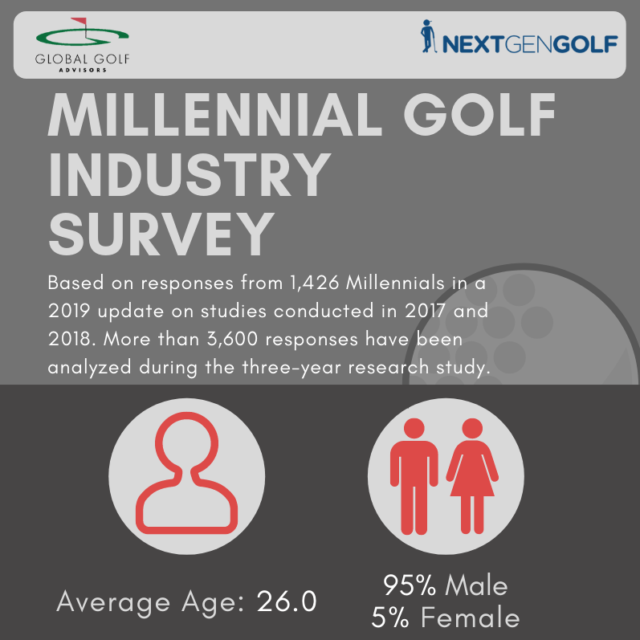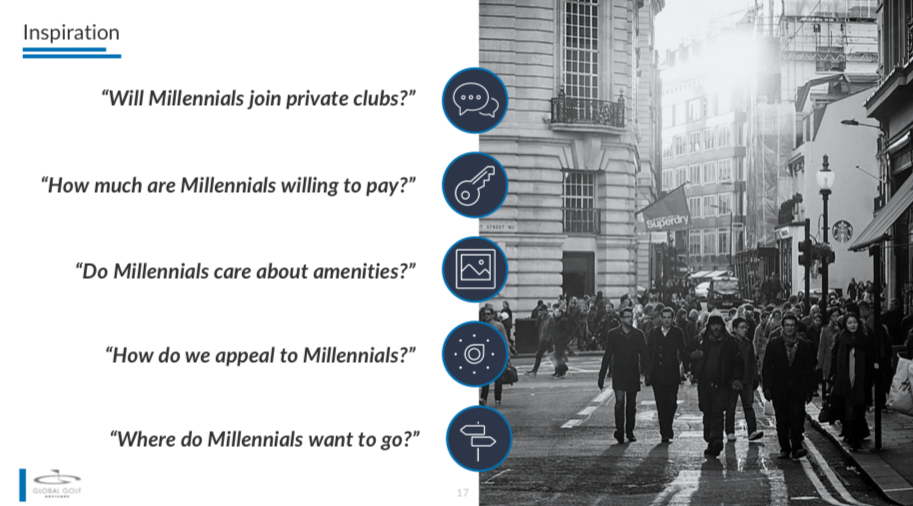First impressions matter. But how do we create positive experiences for all when different customers have different values?
Backed by recent research findings, GGA’s Ben Hopkinson looks at why clubs need to think carefully about their product perception in relation to a key target segment, and provides some guidance.
First impressions of a Club can come in a variety of different forms, be it an initial tour, as a member’s guest, at a social event, or otherwise. Increasingly, it need not require an actual visit for someone to form a first impression. Even something like a video advertisement of the Club can form a lasting opinion in the eyes of a potential customer.
One thing, however, is for sure: you never get a second chance at a first impression. So how do you create a memorable first impression of your club’s product and services?
It’s not an easy question to answer, but successful club marketers go above and beyond to understand the key attributes that their target customers value most, because preferences around joining can change drastically based on age, gender or economic status. While it’s important for clubs to isolate their key strengths and core competencies, this shouldn’t lead to inflexible, one-size-fits-all marketing that force-feeds the same joining factors to all of the different target groups.
Understand the Joining Preferences of each Key Audience
Let’s take Millennials as an example – the age segment that continues to keep club marketers up at night. Here’s what we know for sure about the characteristics and values of my confusing and intriguing generation:
- We’re getting married and starting families later in life
- We move and switch jobs more often
- We lead busier lifestyles than previous generations and devote less time to leisure pursuits
Because of this, our ideal private club experience needs to maximize the family time we do have, be flexible, and offer much more than just golf. But, perhaps most importantly, we want to be around other Millennials!
So, how does this translate into the experience and amenities we are looking for? Recent GGA client surveys have continued to show my generation placing a higher value on the non-golf amenities and social experience. In a recent study of Millennial golfers*, when asked “what non-golf amenities or social components would be important to you in joining a private club”, the top three selections were ‘Fitness Center’ (76%), ‘Pool’ (71%) and ‘Socialization and Events’ (68%).
Customize the First Impression
Offering the programs and amenities to attract Millennials is step one, but turning those offerings into a memorable experience is the clincher. First impressions for Millennials must help us visualize a comprehensive club experience that becomes the social hub for the entire family – fusing friends, family, fun and fitness. Create first impressions of your club that bring Millennials and our young families together, and the membership value will resonate with us.
Easier said than done, right? How do clubs bring Millennials together when many barely have any current under-40 members to help in the recruitment effort? The answer lies in rolling out a tailored plan of attack for targeting different customers.
Evidence suggests (for some groups at least), that clubs are getting this right. The majority of clubs we work with are well-versed in a member tour for the classic ’empty-nesting baby boomer couple’, where typically the male wants to see golf, golf and golf, while the female prefers to find out more about the dining and social calendar, make sure the staff are friendly, and learn about fitness and tennis programs. Clubs can typically meet all of these expectations while introducing them to current members with similar interests for added appeal.
So how do you create a similar memorable experience for Millennials? First off, you need to build up the programs that Millennials value. If you don’t have a strong under-40 program at your Club then I’m willing to bet you have a strong group of children and grandchildren of existing members waiting to use the Club. They may not have full access to the Club, but it’s critical to Millennial recruitment that you continue to engage them in Club events and socials. Leverage these days to create ‘group’ first impressions. Rather than invite a Millennial couple to experience the Club on a quiet lazy Sunday where all we see is baby boomers, try a different approach:
- Invite all of your Millennial prospects out to a ‘Swim and BBQ’ day or a holiday social, along with current children and grandchildren of members
- Host a Junior Golf Tournament or Golf Camp and give the parents a free Chef Tasting Luncheon while the kids are out on the course
- Follow up a Mitzvah or wedding by offering guests the opportunity to come back to the Club for a ‘free yoga class’, ‘trivia night’ or a ‘tennis/golf group lesson’
These types of initiatives will help your Club standout from the pack, positioning it favorably in the minds of Millennials and increasing your chances of converting new members. Even in the worst case, you have created a memorable group experience; one which generates positive feeling and word-of-mouth in a key customer segment, plus the opportunity to capture images and videos to leverage for the next recruitment effort.
“Memorable is creative, unique, unforgettable, and anything but boring”
It’s true that current members will always be a Club Marketer’s best tool for recruitment, but there are other creative ways to provide a memorable experience and a positive first impression to a prospective member. A ‘one-size-fits-all’ approach simply won’t work anymore. Not only are you competing against other private clubs in the area, you’re also competing against every leisure alternative available to the prospective member.
A first impression must sell the prospect that the day-to-day member experience is memorable, and the best use of their valuable and limited leisure time. Memorable is creative, unique, unforgettable, and anything but boring. So next time a prospective member inquires about the Club, ask yourself… “What does memorable mean to them”?
*As part of an ongoing research collaboration with Millennial golfer organization Nextgengolf, the 2019 study brings forward survey findings from over 1,400 Millennial golfers and builds upon research conducted in 2017 and 2018 of the habits, attitudes, and preferences of Millennial golfers.
This article was authored by GGA Senior Associate Ben Hopkinson.










